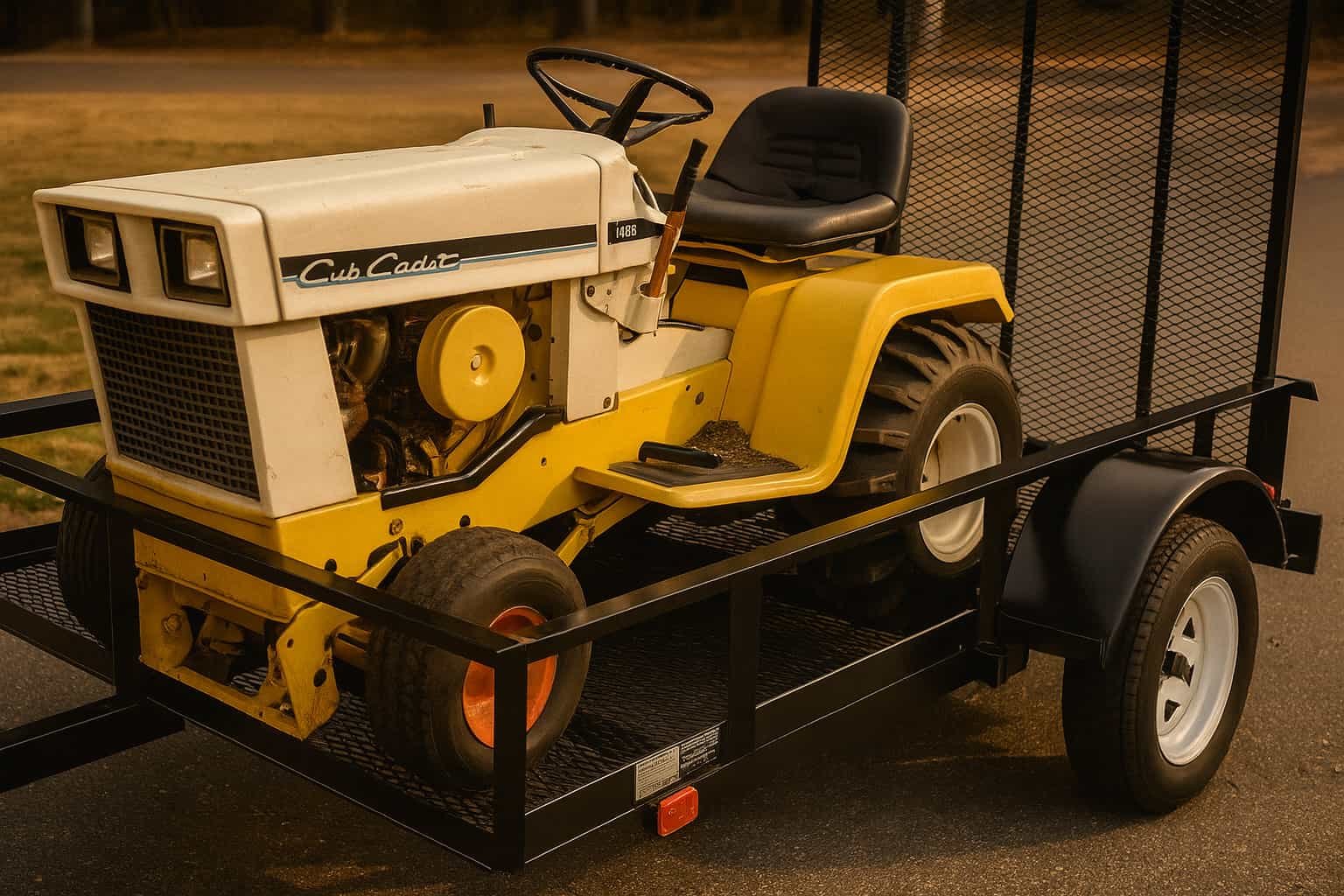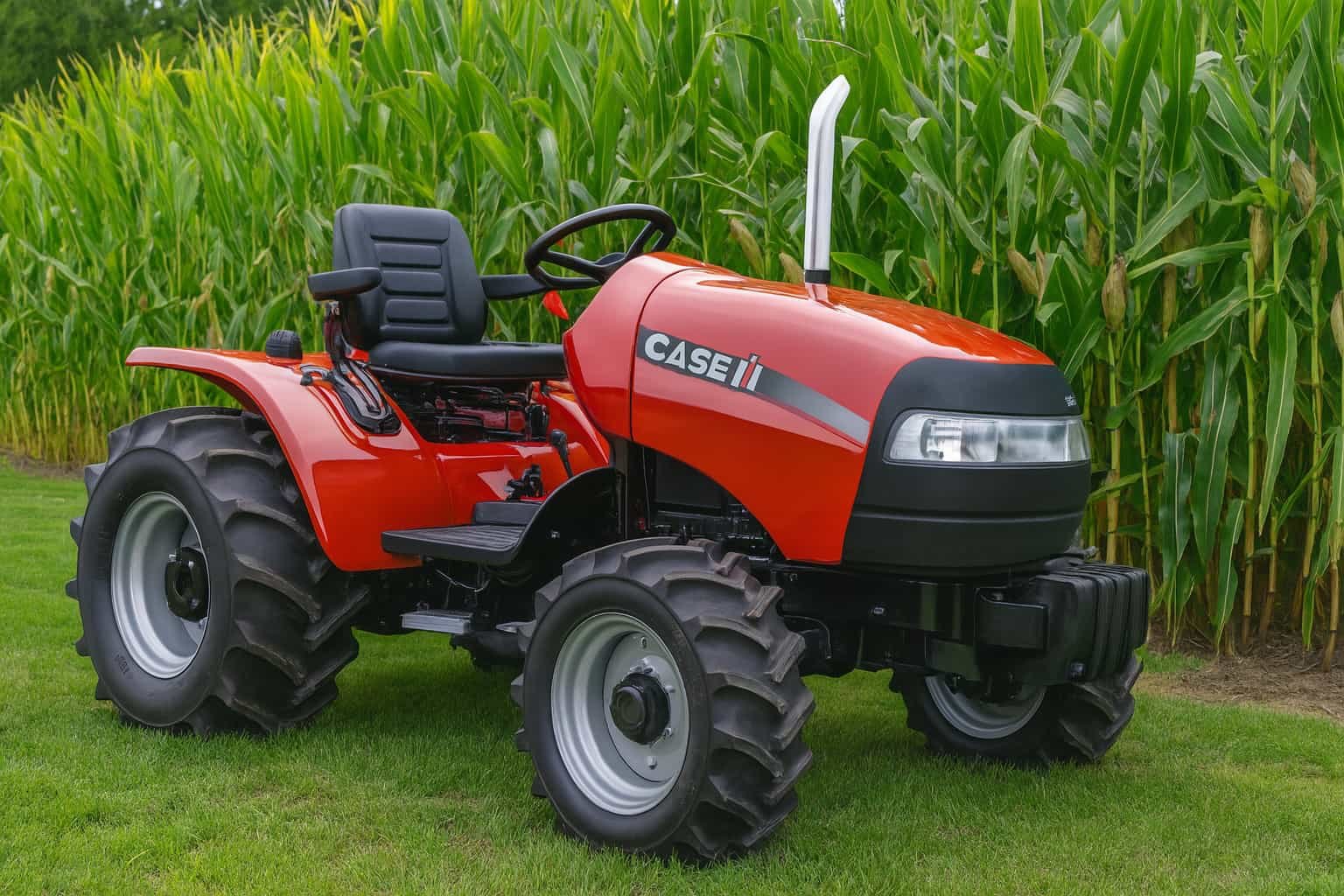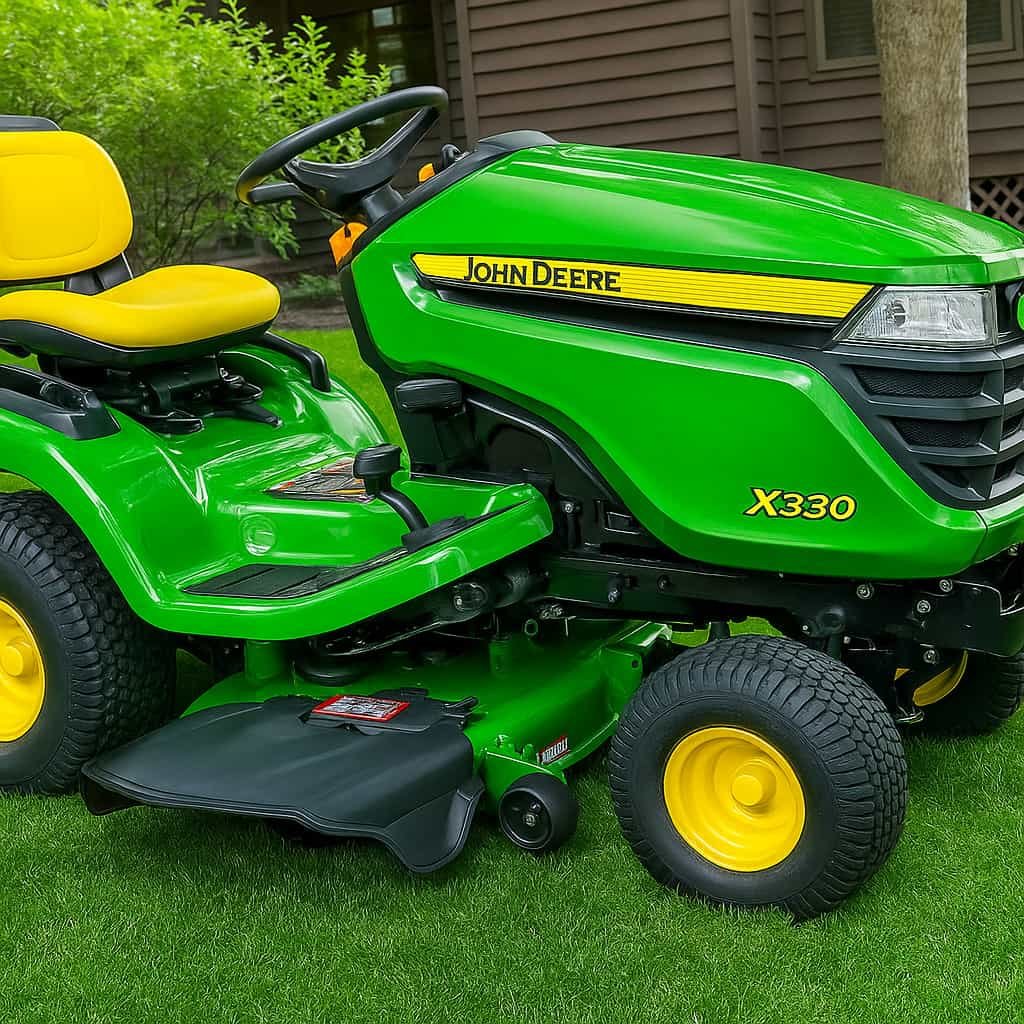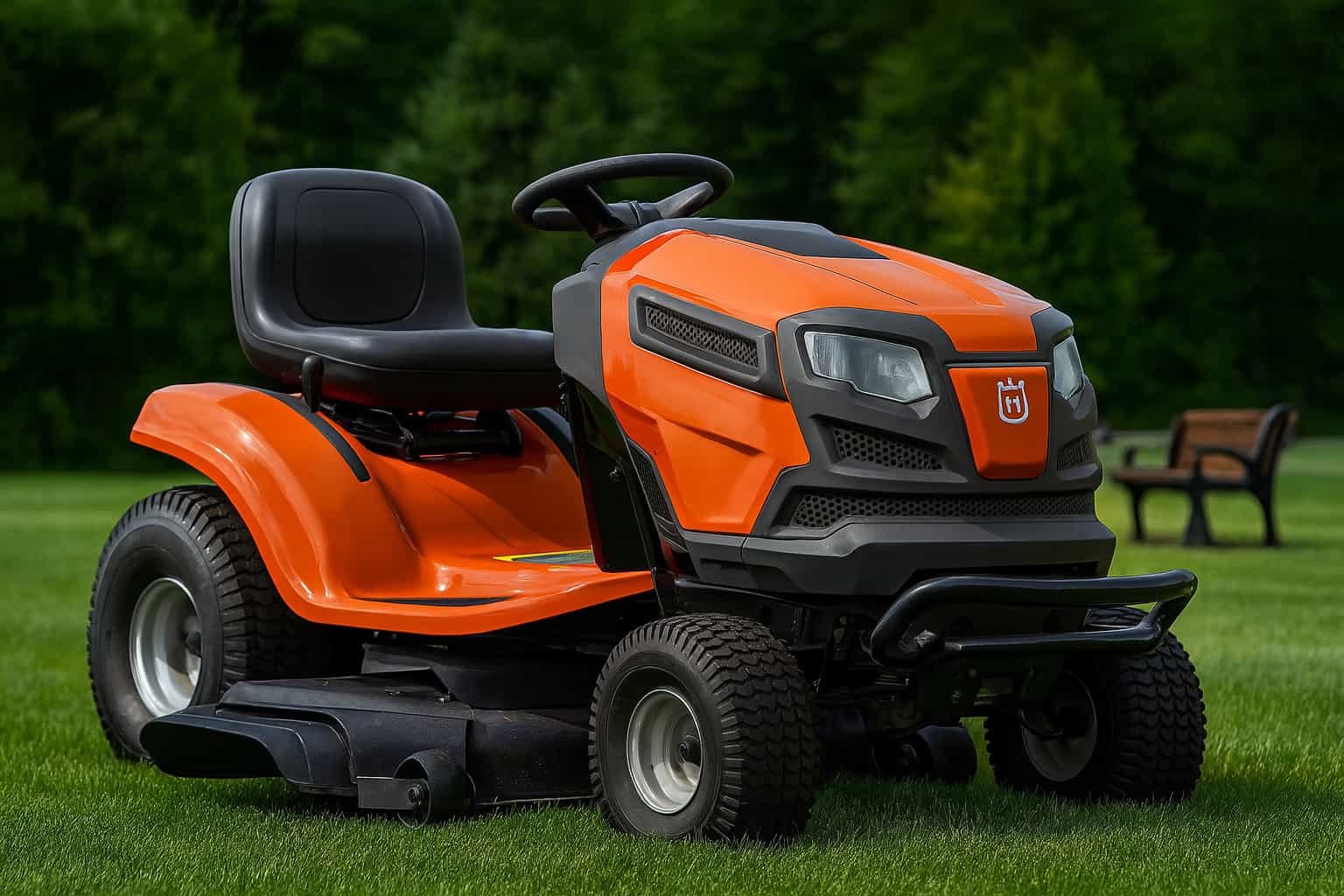What is a Garden Tractor?
A garden tractor is a versatile, heavy-duty machine designed for landscaping tasks such as mowing, tilling, and hauling. These tractors are more robust than standard lawn mowers and are equipped with stronger engines and various attachments.

Key Features of a Garden Tractor:
- Heavy-Duty Construction: Built to handle demanding tasks.
- Powerful Engine: Typically more horsepower than lawn mowers.
- Multiple Attachments: Can be equipped with plows, tillers, and carts.
- Durability: Designed for long-term use in tough conditions.
Common Uses:
- Mowing Large Areas: Efficiently covers larger lawns and fields.
- Tilling Soil: Prepares garden beds and fields for planting.
- Hauling Materials: Transports soil, mulch, and other materials.
Comparison with Lawn Tractors:
- Lawn Tractors: Primarily for mowing smaller lawns.
- Garden Tractors: Suitable for a variety of heavy-duty garden tasks.
By understanding these features and uses, you can determine whether a garden tractor is the right tool for your landscaping needs.
What do you use a garden tractor for?
A garden tractor is primarily used for heavy-duty lawn maintenance tasks, such as mowing large areas, plowing, tilling, and hauling materials. It’s designed to handle more demanding agricultural chores efficiently.

Key Uses of a Garden Tractor
- Mowing Large Areas: Equipped with powerful engines and wide cutting decks, garden tractors can mow extensive lawns quickly.
- Plowing and Tilling: Attachments like plows and tillers make soil preparation for planting easy and efficient.
- Hauling Materials: Garden tractors can tow trailers and carts, making the transport of soil, mulch, and other materials simpler.
- Snow Removal: With the right attachments, garden tractors can clear snow from driveways and paths.
How It Works
- Engine Power: Typically between 15-30 HP, suitable for various attachments.
- Attachments: Interchangeable tools like mowers, plows, and carts.
- Transmission Types: Manual, automatic, and hydrostatic options for different user preferences.
These features make garden tractors versatile and essential for maintaining large properties efficiently.
What are the 3 functions of a tractor?
A tractor primarily performs three essential functions: pulling heavy loads, powering machinery, and providing mobility for various tasks.

1. Pulling Heavy Loads
Tractors are designed to pull heavy implements, such as plows, trailers, and other agricultural equipment. This function allows farmers to perform tasks like tilling soil, planting, and transporting goods.
2. Powering Machinery
Tractors supply the necessary power to operate various types of machinery. Through a Power Take-Off (PTO) shaft, they can drive machinery like mowers, balers, and sprayers. This versatility makes them indispensable for multiple farming operations.
3. Mobility for Various Tasks
Tractors offer mobility across different terrains, enabling them to perform tasks that require movement, such as spreading fertilizers, spraying pesticides, and even snow removal. Their robust design ensures they can navigate challenging field conditions effectively.
By fulfilling these roles, tractors are integral to modern agriculture, enhancing productivity and efficiency.
What is the most important part of a tractor?
The most important part of a tractor is the engine. It provides the necessary power to perform various agricultural tasks such as plowing, tilling, and hauling.

Engine: The Heart of the Tractor
- Power Generation: The engine converts fuel into mechanical energy, which is essential for driving the tractor and its attachments.
- Efficiency: A well-maintained engine ensures optimal fuel consumption and performance.
- Durability: High-quality engines are designed to withstand harsh working conditions, ensuring longevity and reliability.
- Versatility: Modern engines support various attachments and implements, enhancing the tractor’s functionality.
Key Components of the Engine
- Cylinders: Determine the engine’s power output.
- Fuel System: Manages fuel delivery for efficient combustion.
- Cooling System: Prevents overheating during prolonged use.
- Lubrication System: Reduces wear and tear by minimizing friction.
Understanding the engine’s role and maintaining it properly is crucial for maximizing a tractor’s efficiency and lifespan.
What is the main system of a tractor?
The main system of a tractor is its drivetrain, which includes the engine, transmission, and final drive components. This system is responsible for converting fuel into mechanical power to perform various agricultural tasks.

Key Components of a Tractor’s Drivetrain:
- Engine: Generates power by burning fuel.
- Transmission: Transfers engine power to the wheels, allowing speed and torque control.
- Final Drive: Delivers power to the axles and wheels.
How It Works:
- Fuel Combustion: The engine burns fuel to create mechanical energy.
- Power Transfer: The transmission adjusts the speed and torque from the engine.
- Movement: The final drive translates this power into movement, enabling the tractor to perform tasks like plowing and towing.
Understanding the drivetrain is crucial for maintenance and efficient operation of tractors in agricultural settings, ensuring optimal performance and longevity.
What is the difference between a Garden Tractor and a Lawn Tractor?
A garden tractor is more powerful and versatile than a lawn tractor, designed for heavy-duty tasks beyond mowing, such as tilling, plowing, and hauling. In contrast, a lawn tractor is primarily for mowing lawns and light-duty yard work.
Key Differences
- Purpose and Usage:
- Garden Tractor: Heavy-duty tasks including mowing, tilling, plowing, and hauling.
- Lawn Tractor: Primarily mowing and light yard work.
- Engine Power:
- Garden Tractor: Higher horsepower to handle various attachments.
- Lawn Tractor: Lower horsepower, optimized for mowing.
- Attachments:
- Garden Tractor: Compatible with a wide range of attachments like snow blowers, tillers, and plows.
- Lawn Tractor: Limited to basic attachments such as baggers and carts.
- Construction:
- Garden Tractor: Sturdier frame and transmission for heavy-duty work.
- Lawn Tractor: Lighter frame, focusing on ease of mowing and maneuverability.
In summary, choose a garden tractor for versatile, heavy-duty yard tasks and a lawn tractor for regular lawn maintenance.
What are the benefits of a Garden Tractor?
A garden tractor offers multiple benefits, including efficient lawn maintenance, versatility in yard tasks, and durability for long-term use. These machines are designed to handle various attachments, making them ideal for mowing, tilling, and snow removal.

Key Benefits:
- Efficient Lawn Maintenance:
- Mowing: Garden tractors can cover large areas quickly and evenly.
- Maneuverability: They easily navigate around obstacles.
- Versatility:
- Attachments: Compatible with tools like tillers, plows, and trailers.
- Multi-Season Use: Effective for tasks year-round, including snow removal.
- Durability:
- Robust Construction: Built to last, reducing long-term costs.
- Powerful Engines: Capable of handling heavy-duty tasks.
Conclusion
In summary, garden tractors are a valuable investment for homeowners seeking efficient, versatile, and durable solutions for a variety of lawn and garden tasks.

